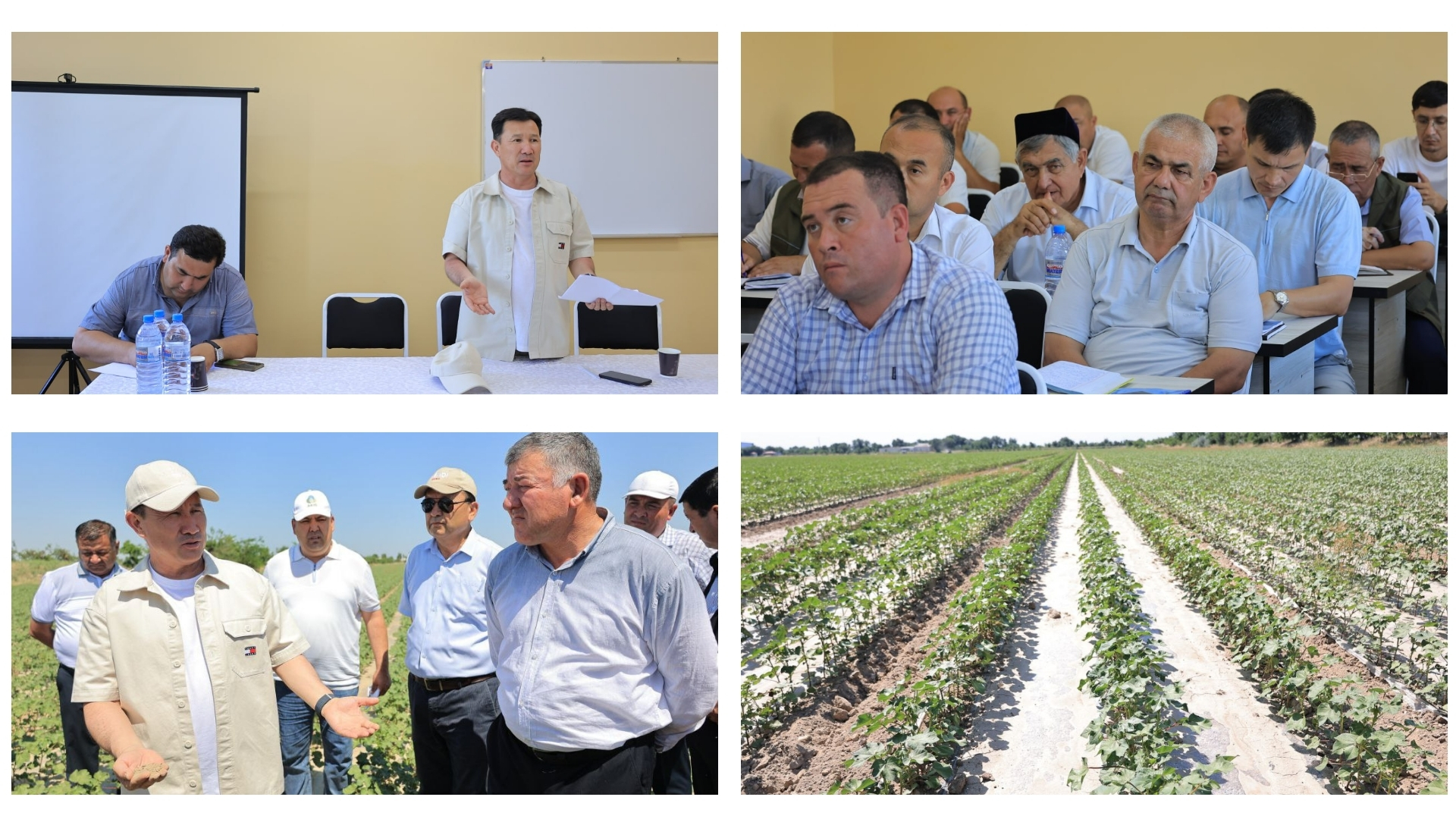
Paxtachilik kengashi hududiy ishchi guruhi hamda barcha viloyatlar agroxizmatlar markazlari vakillari Sirdaryoda boʻlishdi
6-iyun kuni Sirdaryo viloyatida xorijdan keltirilgan gʻoʻza navlаri va duragaylarini parvarishlashda har bir navgа xos boʻlgan yuqori samarador agrotexnologiyalarni qoʻllash, gʻoʻza urugʻini tindirib hamda boshqa hududdan olib kelib (almashlab) ekish amaliyoti joriy qilingan maydonlarda gʻoʻzaning rivojlanish holati, xorijiy gʻoʻza navlari va duragaylarini mahalliy sharoitda yetishtirish agrotexnologiyalarini tatbiq etish yuzasidan dala amaliy seminari boʻlib oʻtdi. Unda Oʻzbekiston Respublikasi Prezidenti huzuridagi Paxtachilik kengashi hududiy ishchi guruhi hamda barcha viloyatlar agroxizmatlar markazlarining vakillari ishtirok etdi.
Tashrifning birinchi manzili Sirdaryo tumanidagi Oʻzbekiston-Xitoy qoʻshma korxonasi boʻldi. Bu yerda “Peng Sheng” MCHJ tomonidan Xitoy agrotexnologiyasi asosida paxta yetishtirish tajribasini oʻrganildi. Bu yerda 68 gektarli yer maydonida tomchilatib sugʻorish orqali 34 gektarida qoʻsh qator hamda 34 gektarida oddiy 76 sm yakka qator usulida paxta ekilgan. Chigit yerga 25-aprelda qadalgan boʻlib, ayni kunlardagi oʻsish holati ijobiy, dala maydoni begona oʻtlardan holi va kerakli agrotexnik tadbirlar amalga oshirilmoqda. Oʻtgan yili ushbu maydondan gektariga 70 sentnerdan hosil olingan. Bu yil gektariga 70-75 sentnerdan hosil olish reja qilinmoqda.
Seminar ishtirokchilarining keyingi tashrif manzili Sirdaryo tumanidagi “Sulaymon oʻgʻli Xudoyqul” fermer xoʻjaligi boʻldi. Bu yerda tindirilgan urugʻlik chigitni qoʻshqator usulida ekib parvarishlanmoqda. Maydonga S-6524 navi 2024-yil hosili uchun an'anaviy usulda umumiy 50,3 maydonning 16 gektariga qoʻshqator va 34,3 gektariga oddiy 90 sm usulida ekilgan. Oʻtgan yili qoʻsh qator usulida ekilgan paxta maydonida gektariga 51,5 sentnerdan, qator orasi 90 sm ekilgan yakka qatorli maydonida 42 sentnerdan paxta hosili olingan. Bu yil qoʻsh qator ekilgan maydonida 55 sentnerdan, qator oraligʻi 90 sm holatda ekilgan maydonida esa 45 sentnerdan ziyod hosil olish rejalashtirilgan.
Paxta ekilgan dala maydoni Paxtachilik kengashining ishchi guruhi aʼzolari tomonidan koʻzdan kechirilganda hozirgi paytda paxtaga mineral oʻgʻit berish va bargdan oziqlantirish kerak ekani aytib oʻtildi.
Navbatdagi hudud "Poly Tex Sirdaryo” MChJ paxta toʻqimachilik klasterining "Boʻston" hududi boʻldi. Bu yerda Xitoy agrotexnologiyasi hamda an’anaviy usulda yetishtirilayotgan paxta maydonlari qiyosiy oʻrganildi. Paxta maydonining 60,8 gektariga "Guliston" navining R-1 avlodi ekilgan boʻlib, ushbu konturda 3000 m³ sigʻimga ega hovuz orqali tomchilatib sugʻorish texnologiyasi joriy etilgan.
“Xitoy texnologiyasi asosida paxta yetishtirilganda an'anaviy uslubga qaraganda koʻchatlar toʻliq unib chiqishi kuzatiladi. Iyun oyining birinchi oʻn kunligi holatiga koʻra, anʼanaviy usulda parvarishlanayotgan paxtalar boʻyi 15-20 smni tashkil etayotgan boʻlsa, bu maydondagi navning boʻyi 35-40 smni tashkil qilmoqda. Shuningdek, koʻchatlar toʻliq shonalagan boʻlib, hozirda olib borilayotgan fenologik kuzatuvlar asosida aytishimiz mumkinki, sentyabr oyining ikkinchi dekadasida paxtani toʻliq yigʻishtirib olish imkoniyati yaratiladi", - deydi biz bilan suhbatda Paxta seleksiyasi, urugʻchiligi va yetishtirish agrotexnologiyalari ilmiy-tadqiqot institutining Sirdaryo viloyati ilmiy-tajriba stansiyasi katta ilmiy hodimi, qishloq xoʻjaligi fanlari boʻyicha falsafa doktori Muxtorxon Nishonqulov.
Shundan soʻng Oʻzbekiston Respublikasi Prezidenti huzuridagi Paxtachilik kengashi kotibi, Oʻzbekiston Respublikasi qishloq xoʻjaligi vazirligi huzuridagi Qishloq xoʻjaligida bilim va innovatsiyalar milliy markazi direktori Sh.Otajonov boshchiligida ishchi guruh hamda barcha viloyatlar agroxizmatlar markazlarining rahbarlari ishtirokida joriy yil boshidan buyon hududlarda amalga oshirilgan amaliy ishlar toʻgʻrisidagi hisobotlar va kelgusida amalga oshirilishi zarur boʻlgan vazifalarni belgilab olishga bagʻishlangan yigʻilish boʻlib oʻtdi. Ishchi guruhlarning hisobotlari tinglanganidan soʻng Shuxrat Otajonov tomonidan hududiy agroxizmatlar markazlari direktorlari va Paxtachilik kengashi ishchi guruhi a'zolariga tezkor amalga oshirilishi kerak boʻlgan quyidagi vazifalar belgilab berildi:
1. Paxtani bargidan oziqlantirish va tarkibida atsetomiprid, imidokloprid taʼsir etuvchi preparatlar bilan ishlov berish;
2. dala atrofiga oʻrgimchakkanaga qarshi maxsus akaritsid yoki iso qaynatmasi bilan ishlov berish;
3. ishlov berilganidan 4-5 kun oʻtgach, gektariga 2 000 donadan “oltinkuz” va 2 grammdan trixogramma tarqatish;
4. dala atrofiga feromon tutkichlar, achitqilar oʻrnatish;
5. muddatida oʻgʻitlash, sugʻorish va kultivatsiya ishlarini oʻtkazish;
6. amalga oshirilgan barcha tadbirlarni qayd etib borish uchun dala daftarini yuritish;
7. har 3-4 kunda dala dioganaliga yoki dala atrofidan 10 -20 metr ichkari qismi kamida 10 ta nuqtada gʻoʻza koʻchatlari barglari, shonalari, oʻsuv nuqtalarini hashorotlarga qarshi kurashish maqsadida sinchiklab tekshirish;
8. xorijdan keltirilgan gʻoʻza navlari tekshiruvdan oʻtkazilganda shubhali hasharot yoki kasallanish holati uchragan taqdirda karantin inspektoriga zudlik bilan murojat qilish va belgilangan tartibda namunalar olib fitosanitar laboratoriyaga joʻnatish tadbirlarini oʻtkazish.
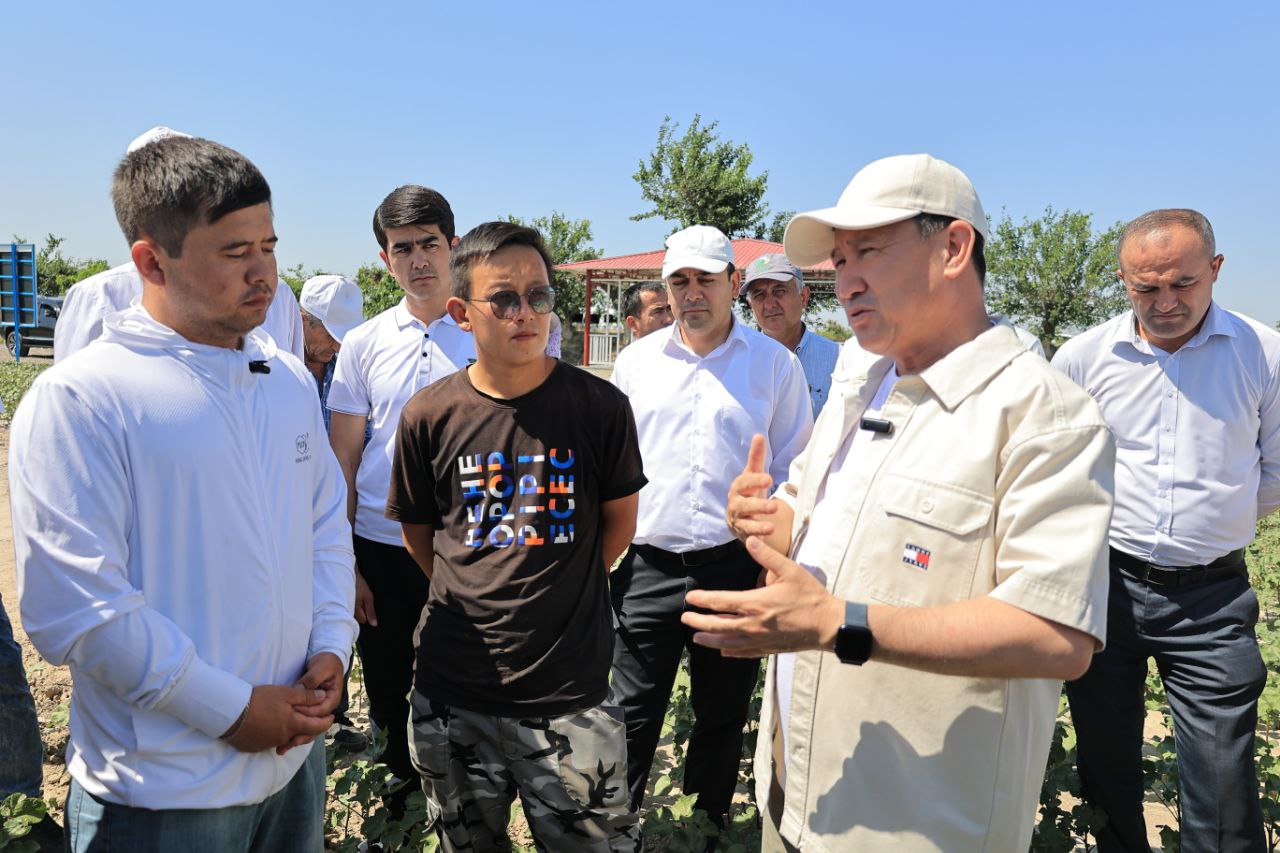
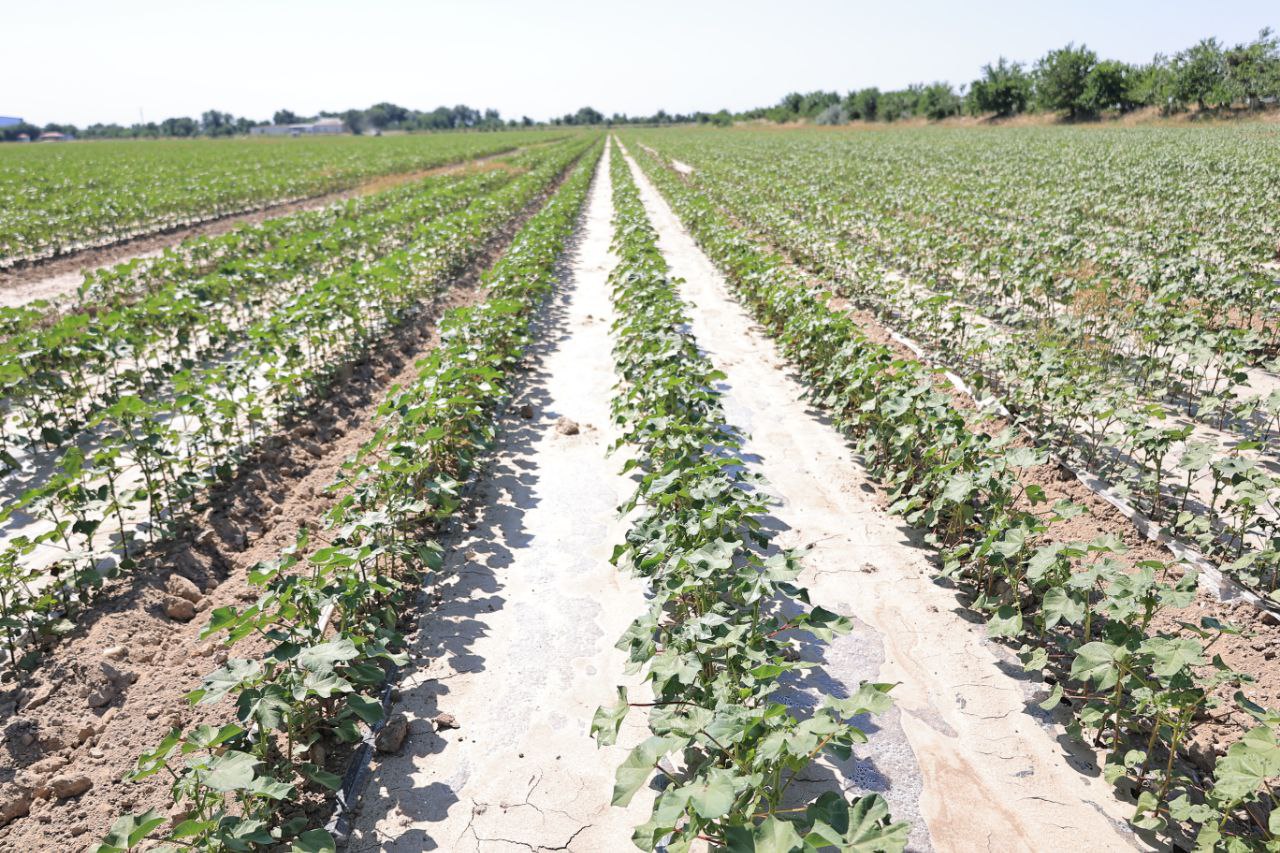

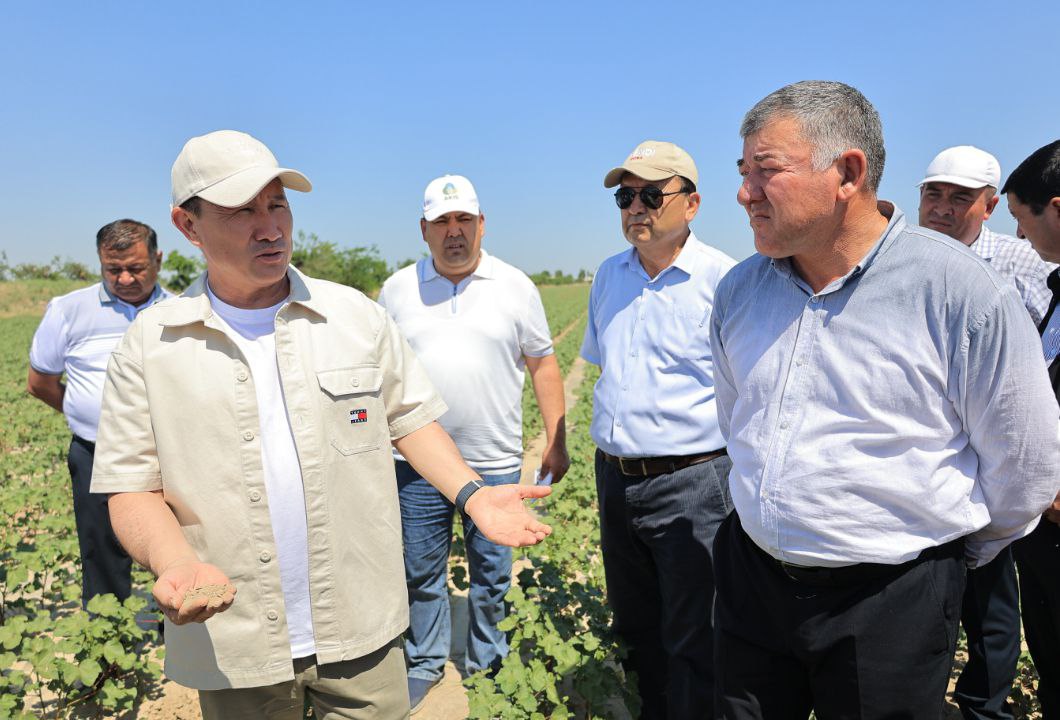
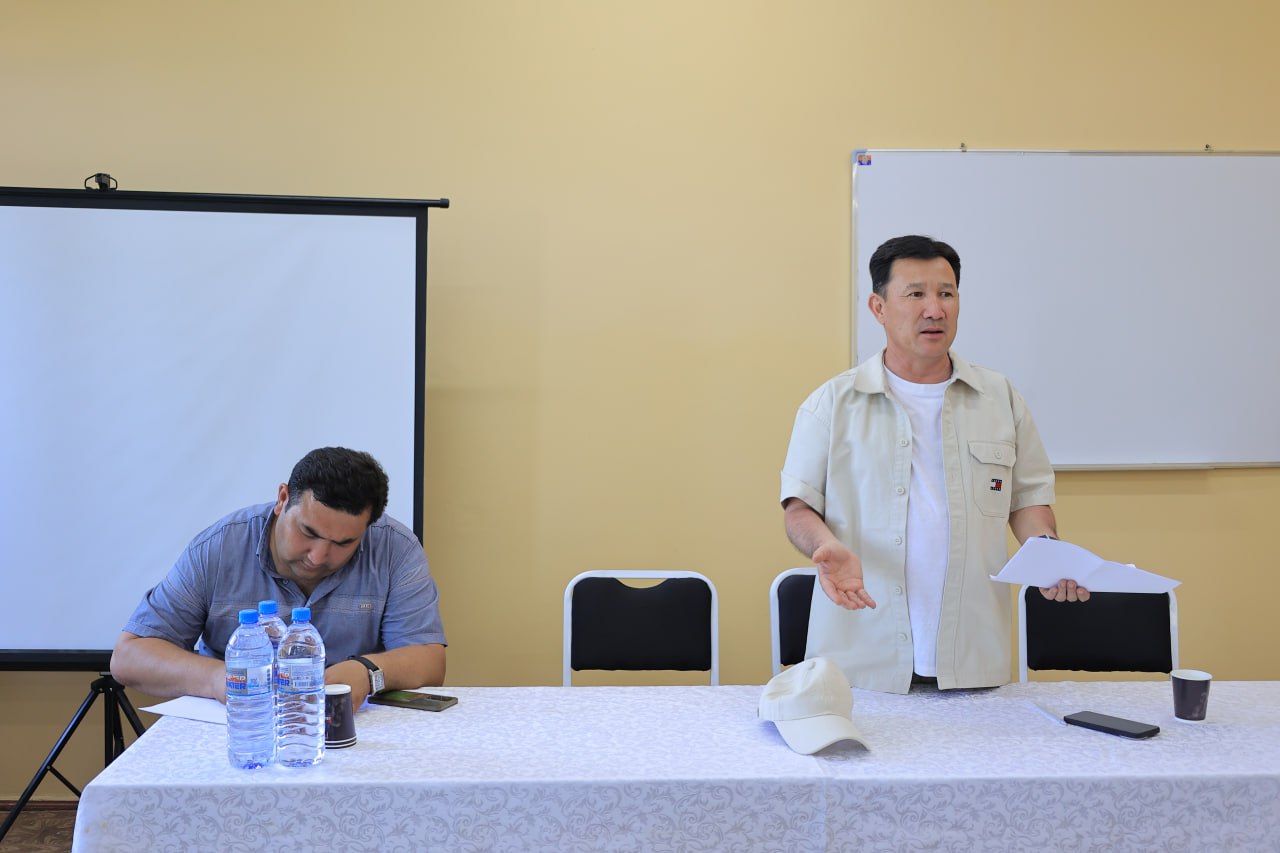
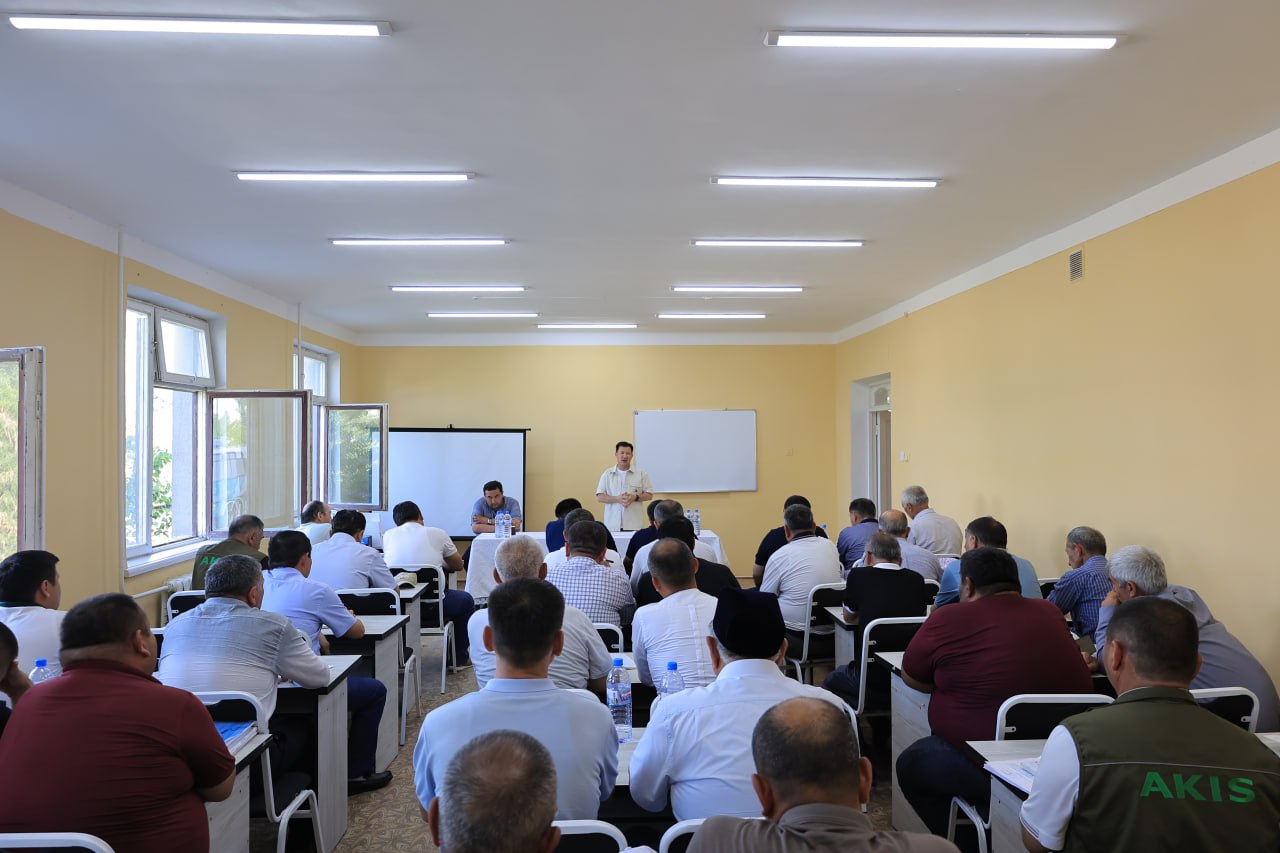
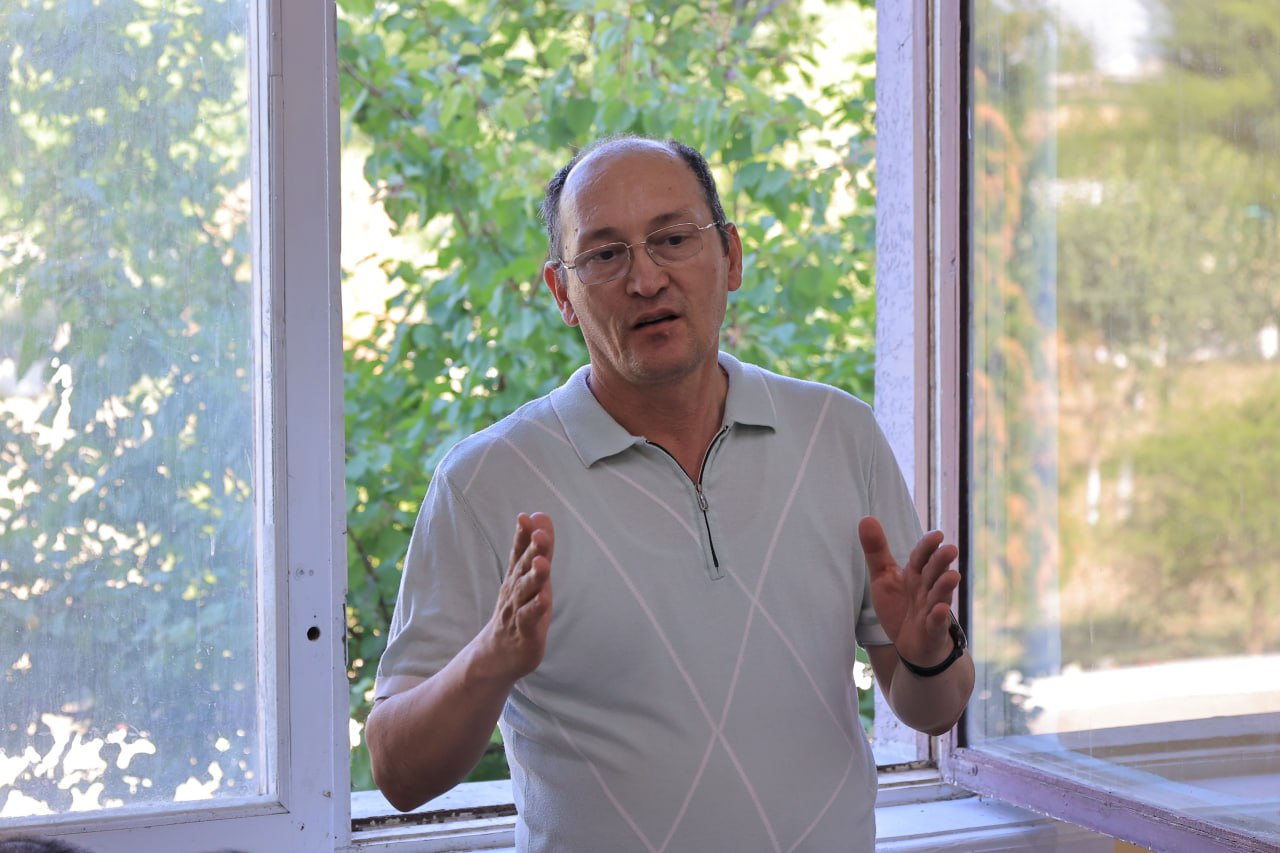
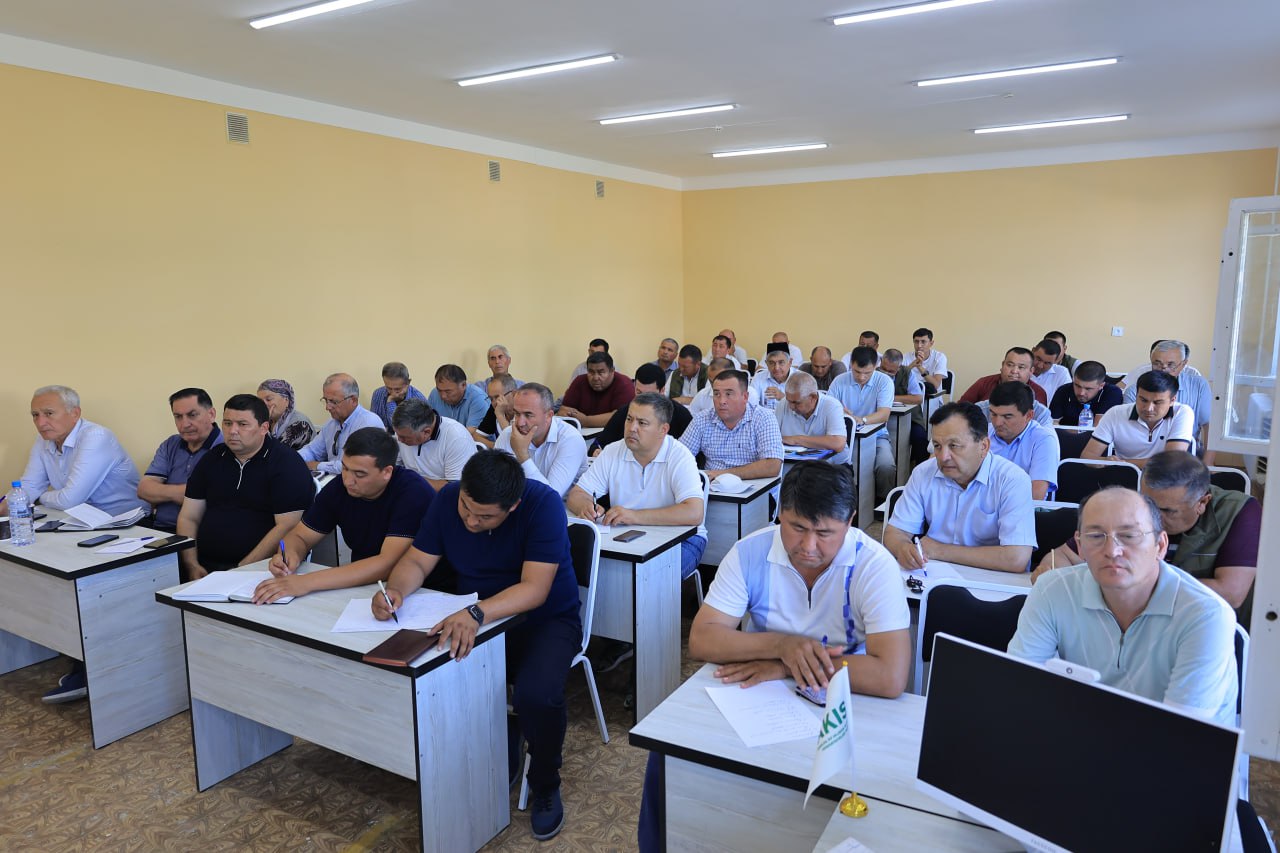
So'ngi yangiliklar
- Sohada amalga oshirilayotgan islohotlar izchilligi va ularning natijadorligi bilan tanishish maqsadida Qishloq xo‘jaligi vaziri Ibrohim Abdurahmonov Xorazm viloyatida bo‘ldi
- Surxondaryo viloyatida 3 333 gektar maydonida Xitoy Xalq Respublikasidan olib kelingan g‘o‘za navlari parvarishlanmoqda
- Paxta qabul qilish maskanlari paxtani qabul qilishga tayyormi